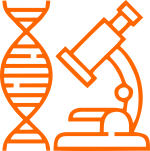Discuss briefly about the techniques used for tracing the evolutionary relationships between the organisms.
Introduction:
Evolution is defined as the continuous changes that occur in the organisms over a period of time. The organisms are said to be adaptive to the environment in which they live. These changes are required for their existence. The organisms which does not adapt suitably are known to be perished over few generations.
Body:
Studying the evolutionary changes is required to know the relationships among the organism and the environment. There are various techniques to study the evolution. These can be broadly classified as:
1) Relative methods
2) Absolute methods
1) Relative techniques:
In these type of study reasonablity is used. For example, while studying a fossil, it is expected that the organisms which have died recently are found in the upper layers while digging when compared to the organisms which have died earlier. Due to the changes in soil profile and calamities like flood, erosion etc would have contributed for the settling of fossils in the lower layers. Those obtained in the lower layers are said to be died earlier.
2) Absolute:
In these techniques, the absolute amount of a particular substance such as Carbon isotope is calculated and ratio is obtained. This ratio will help in estimating the age of the fossils. This technique is called as carbon-dating. There are other techniques as well such as DNA fingerprinting where in the existing organisms is matched with the fossils and suitable conclusions are drawn out of it. Gene sequencing is one more related method for studying evolution.
Conclusion:
Even though there are various techniques, the process will always start with sample collection. This can be through fossils and excavation. Later, the timeline is estimated using the above mentioned techniques. Timeline is considered important because the relationships can be established only by knowing the time in which they existed.



